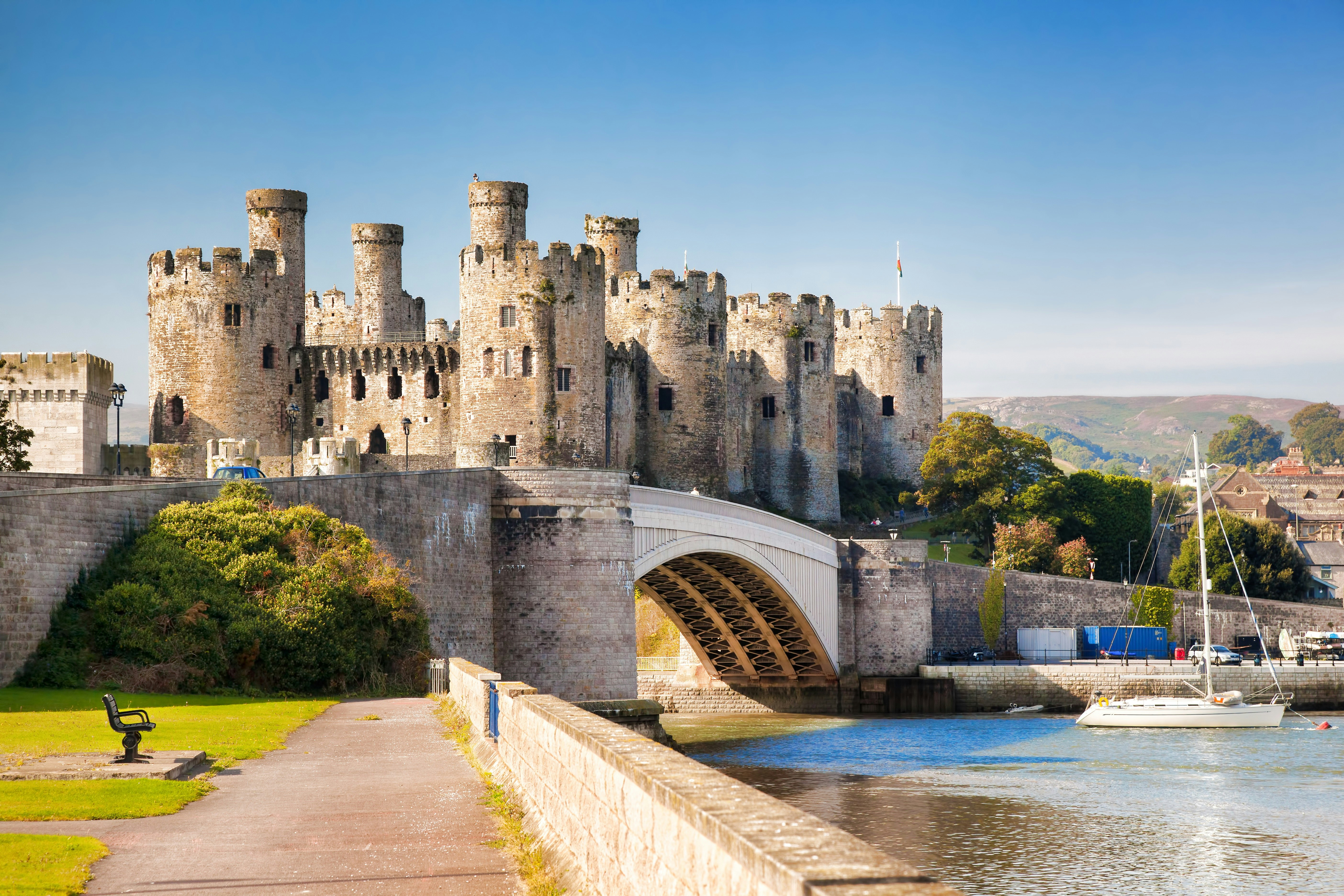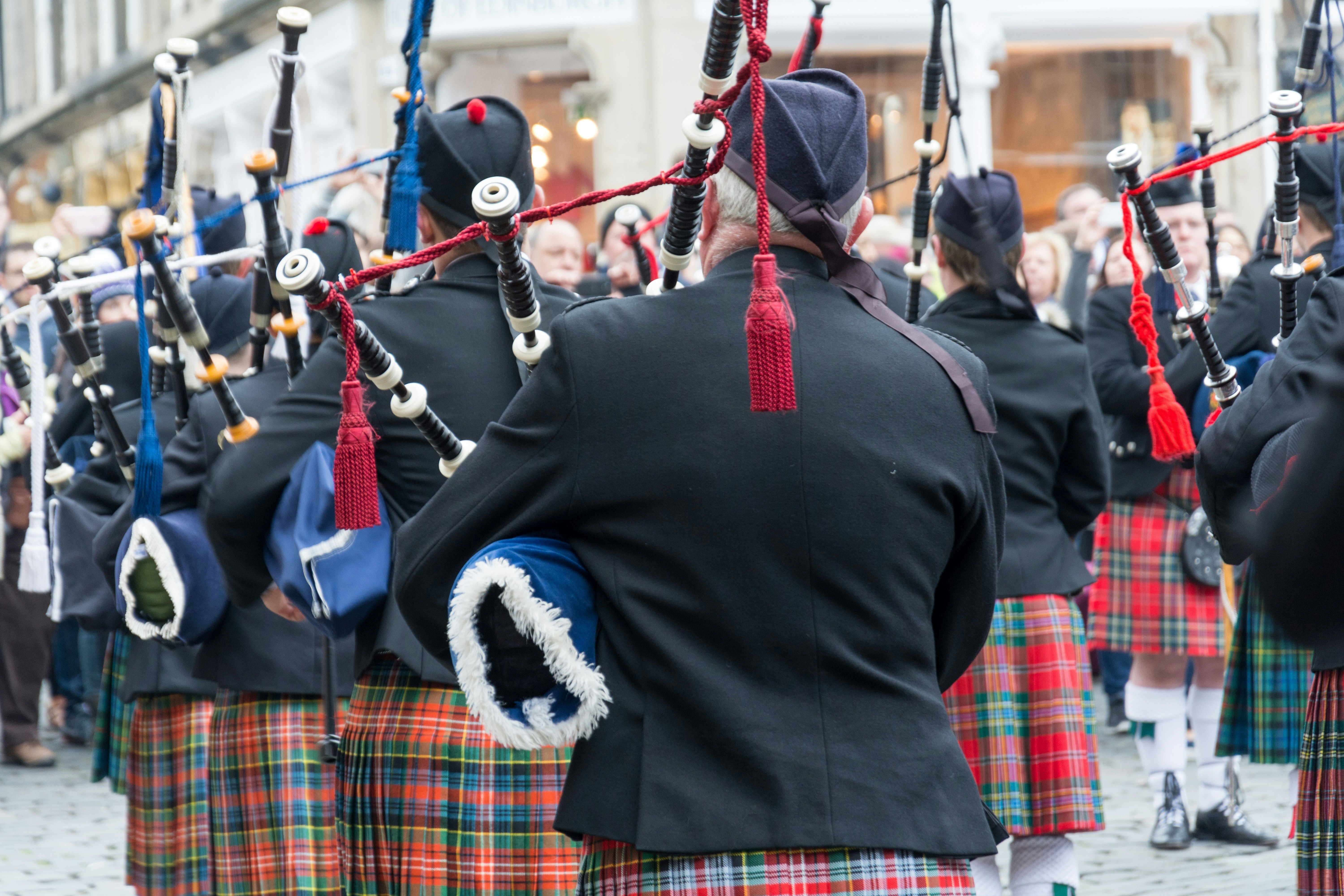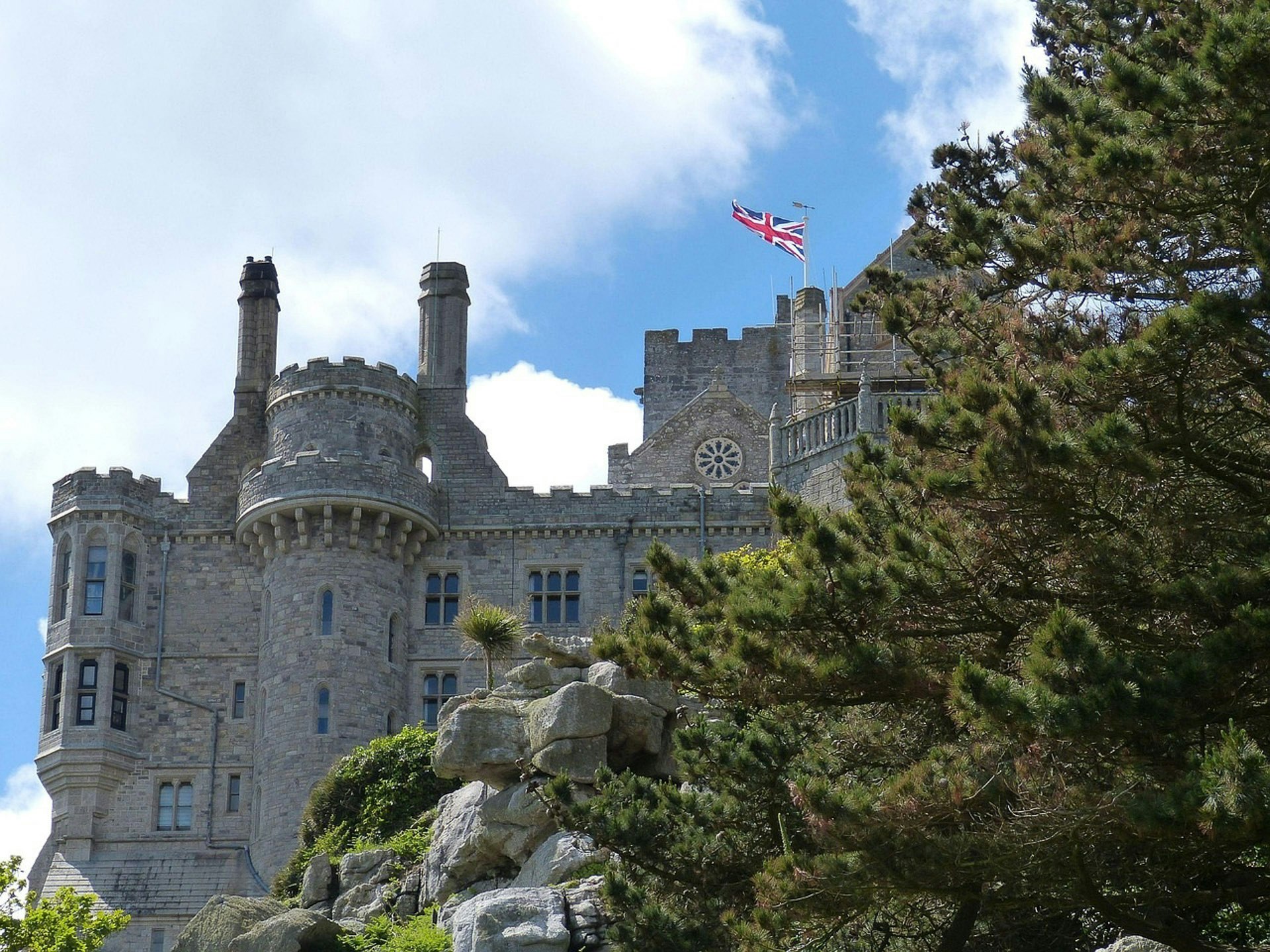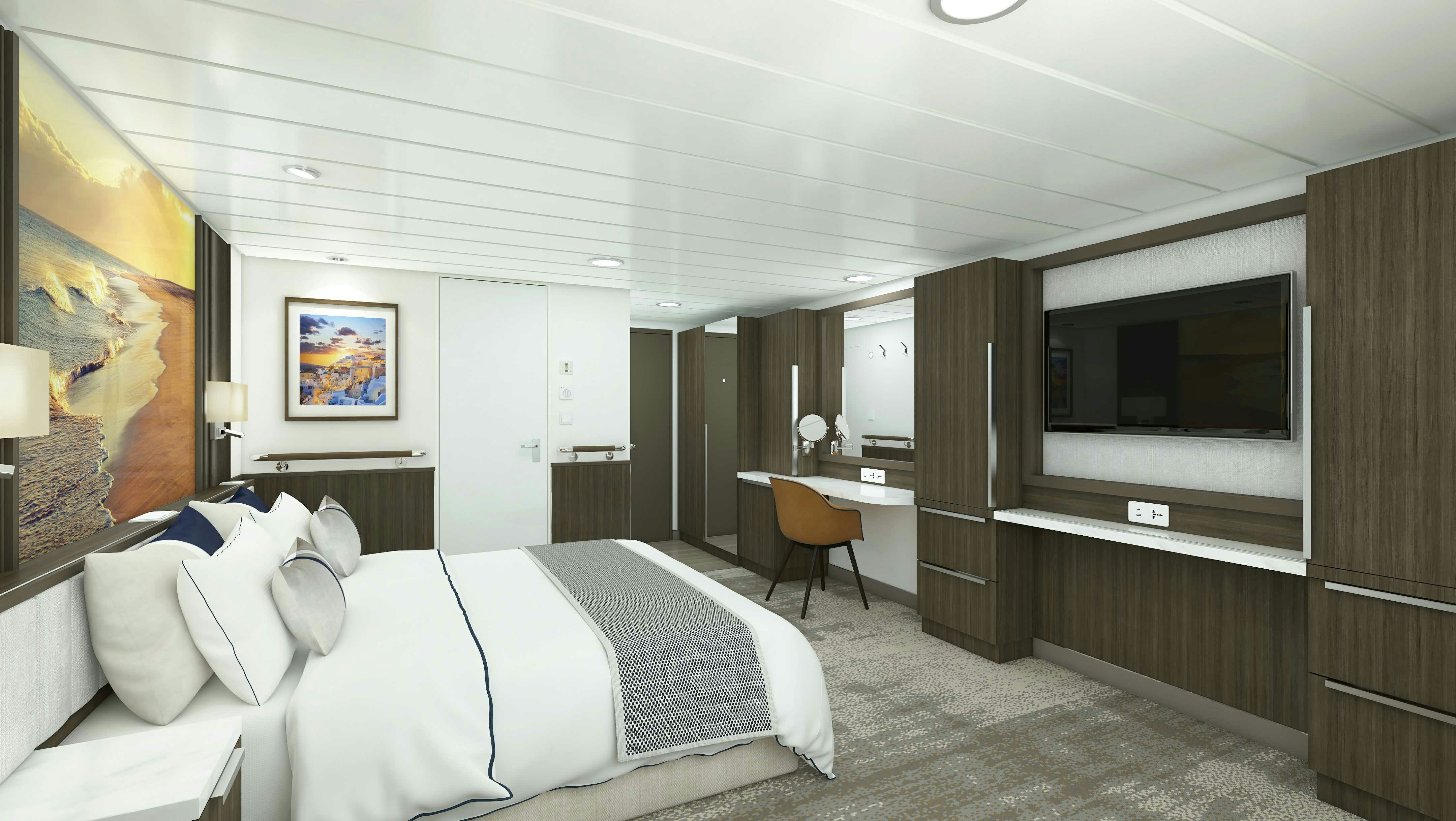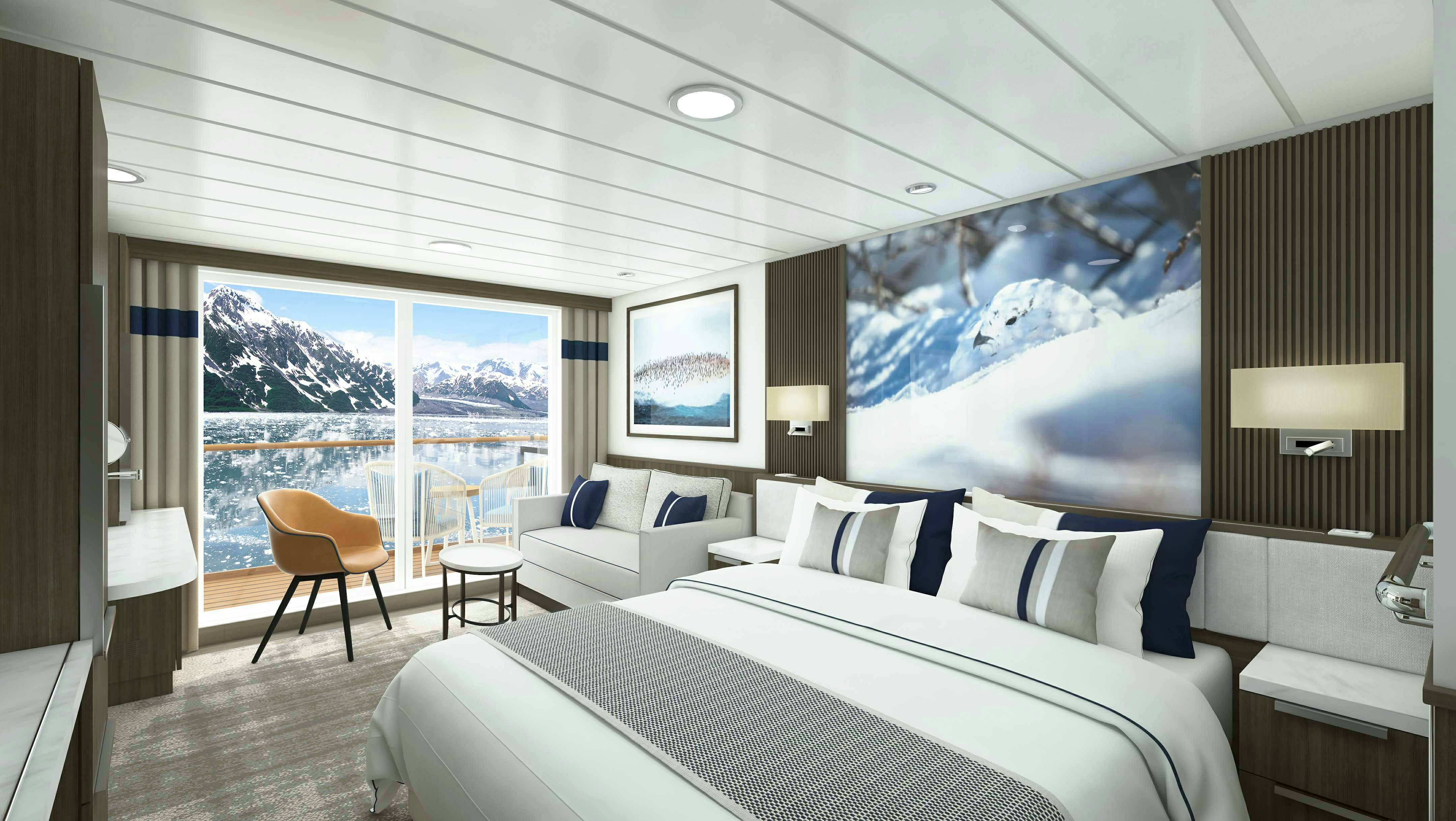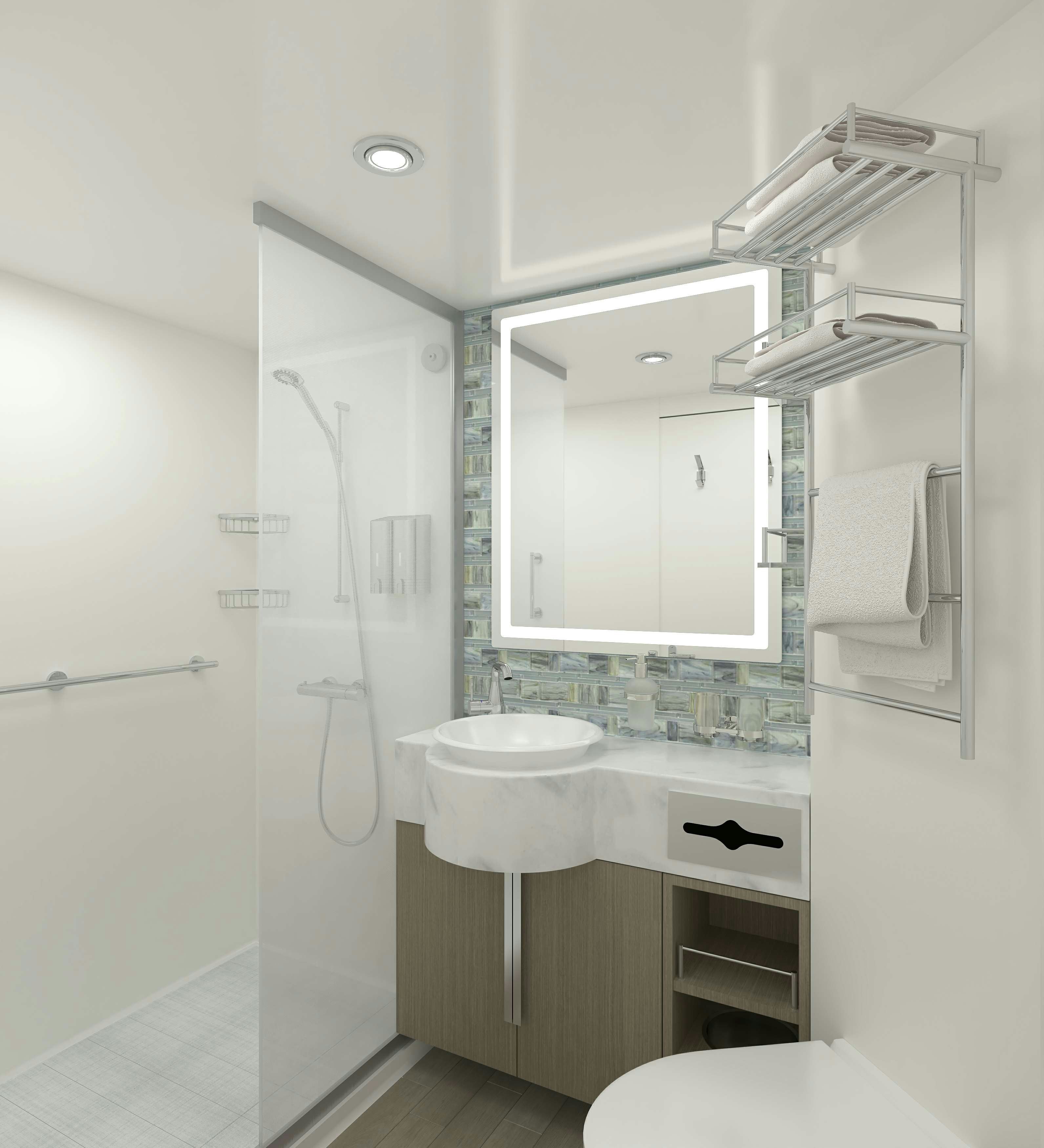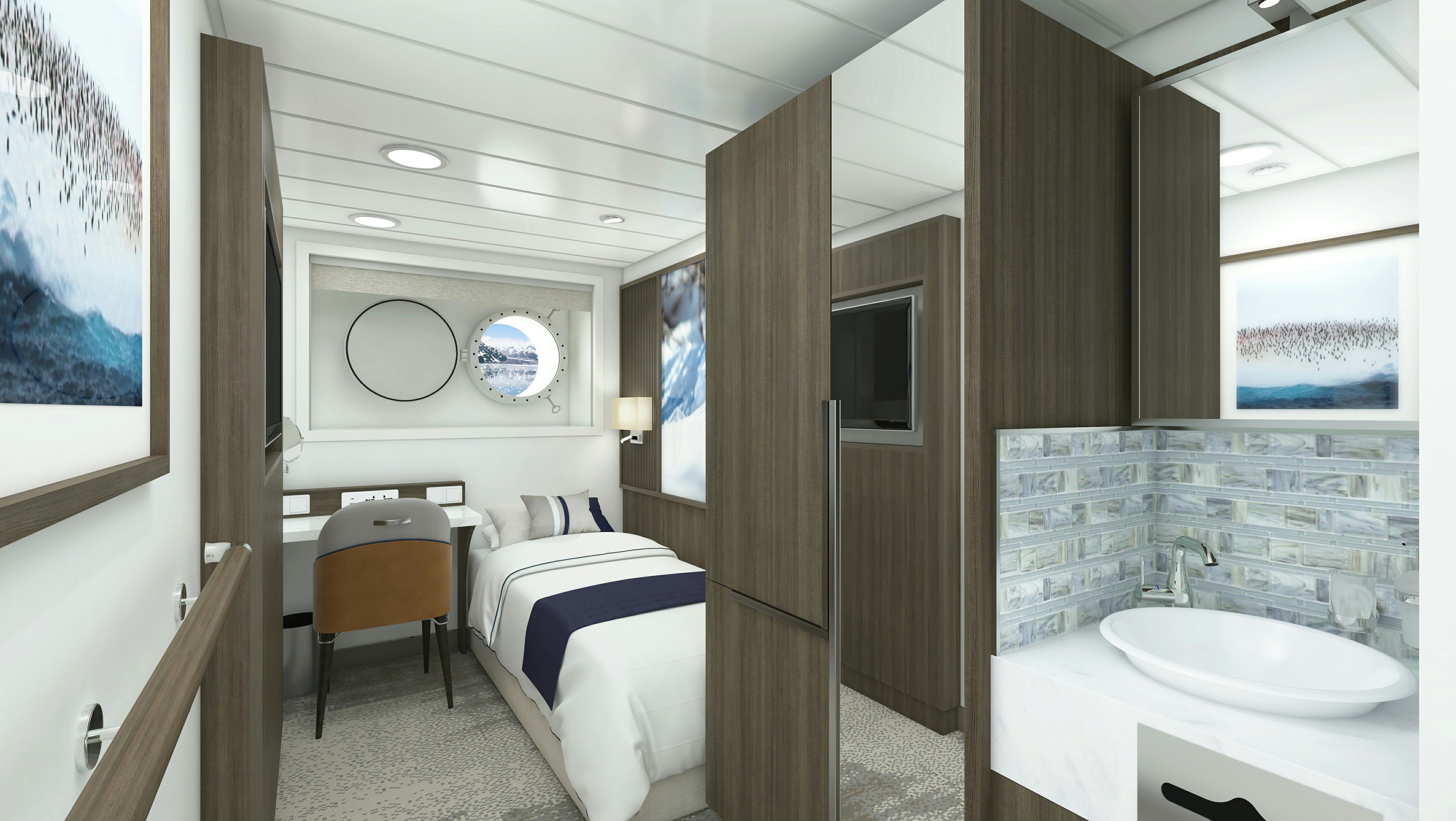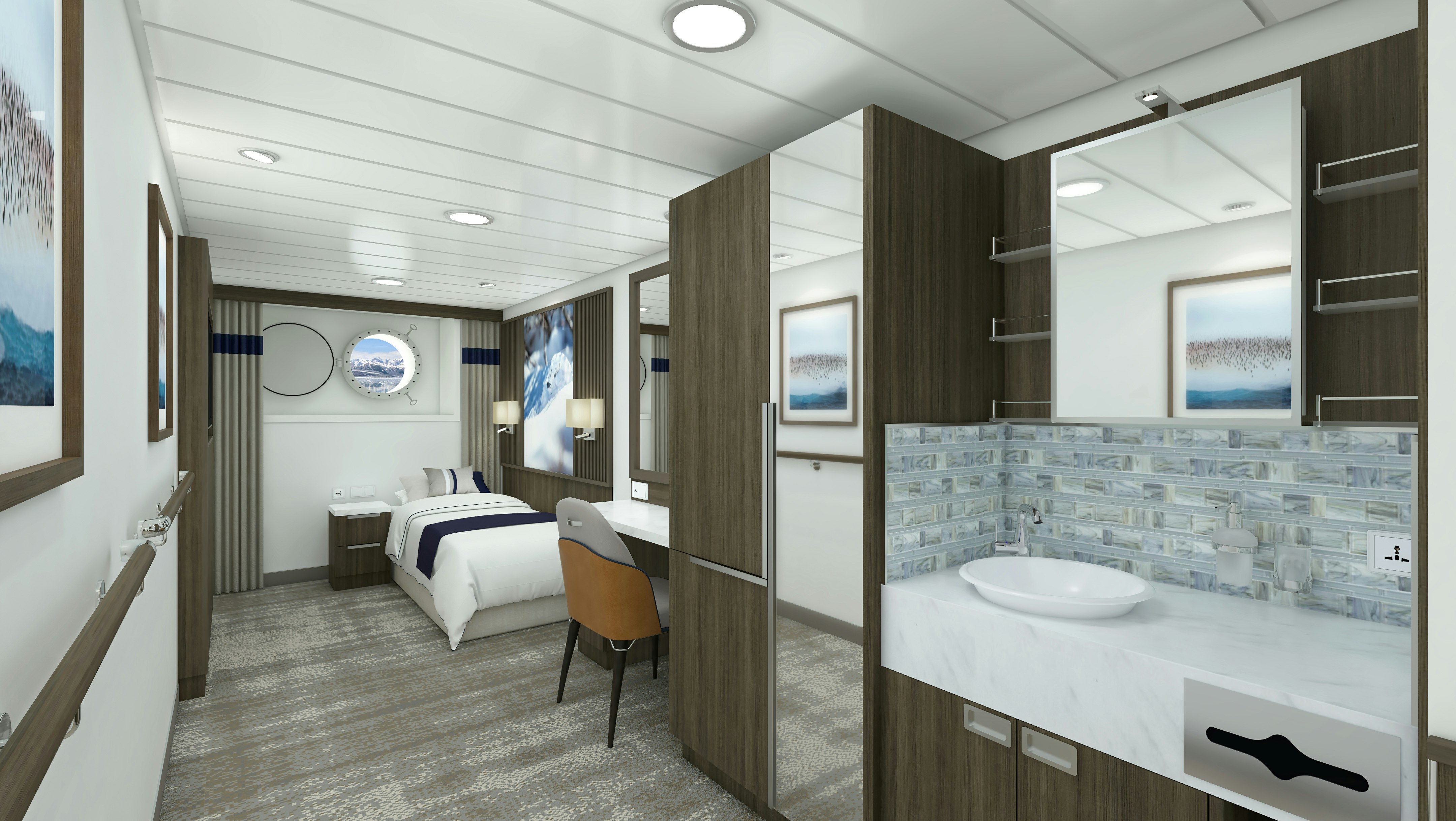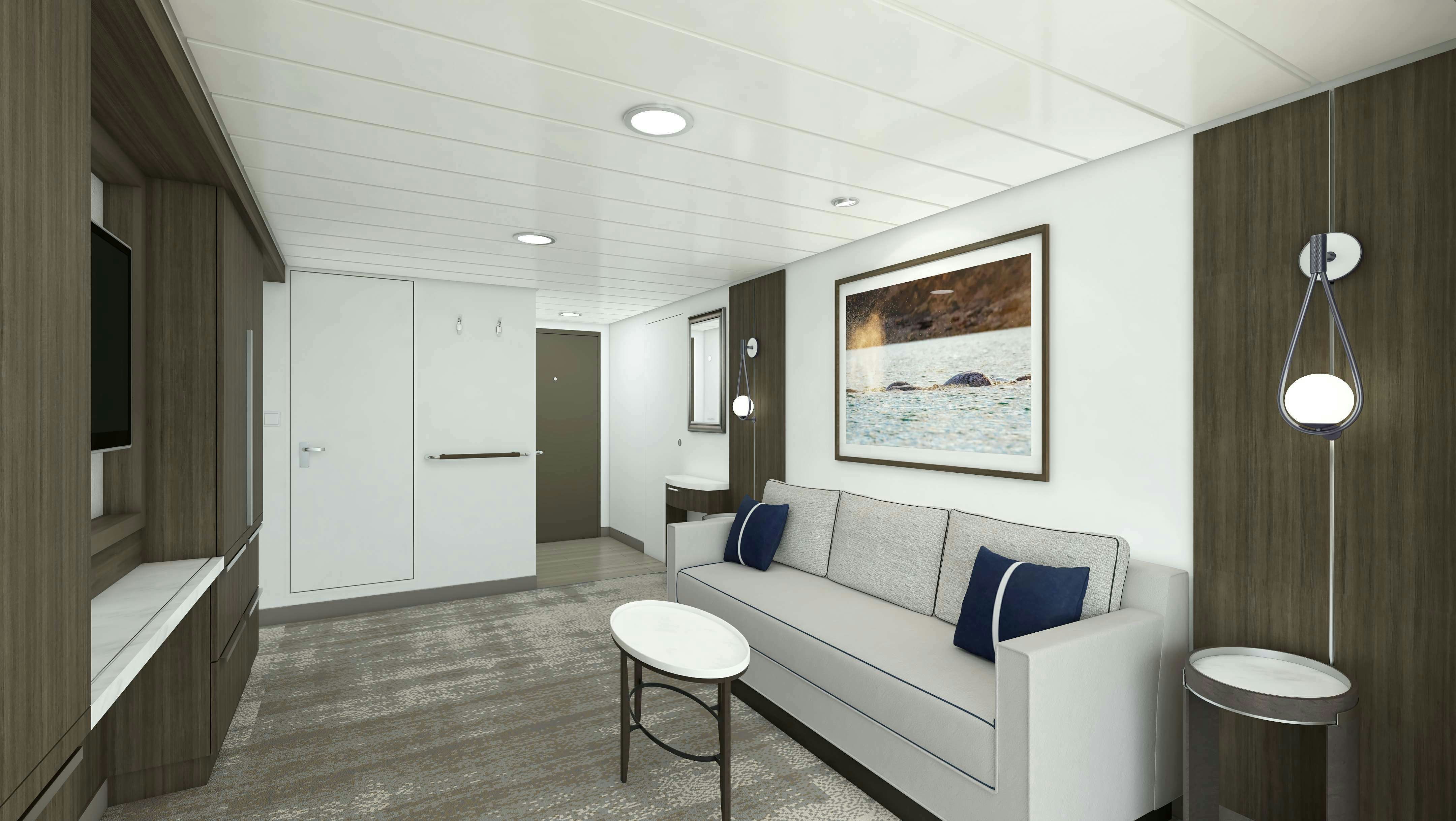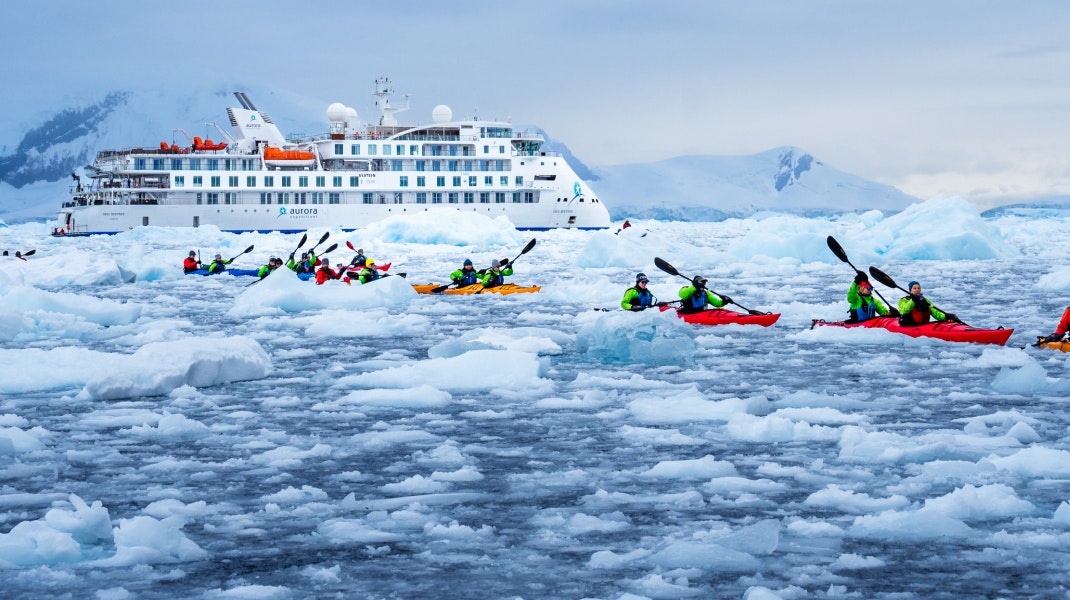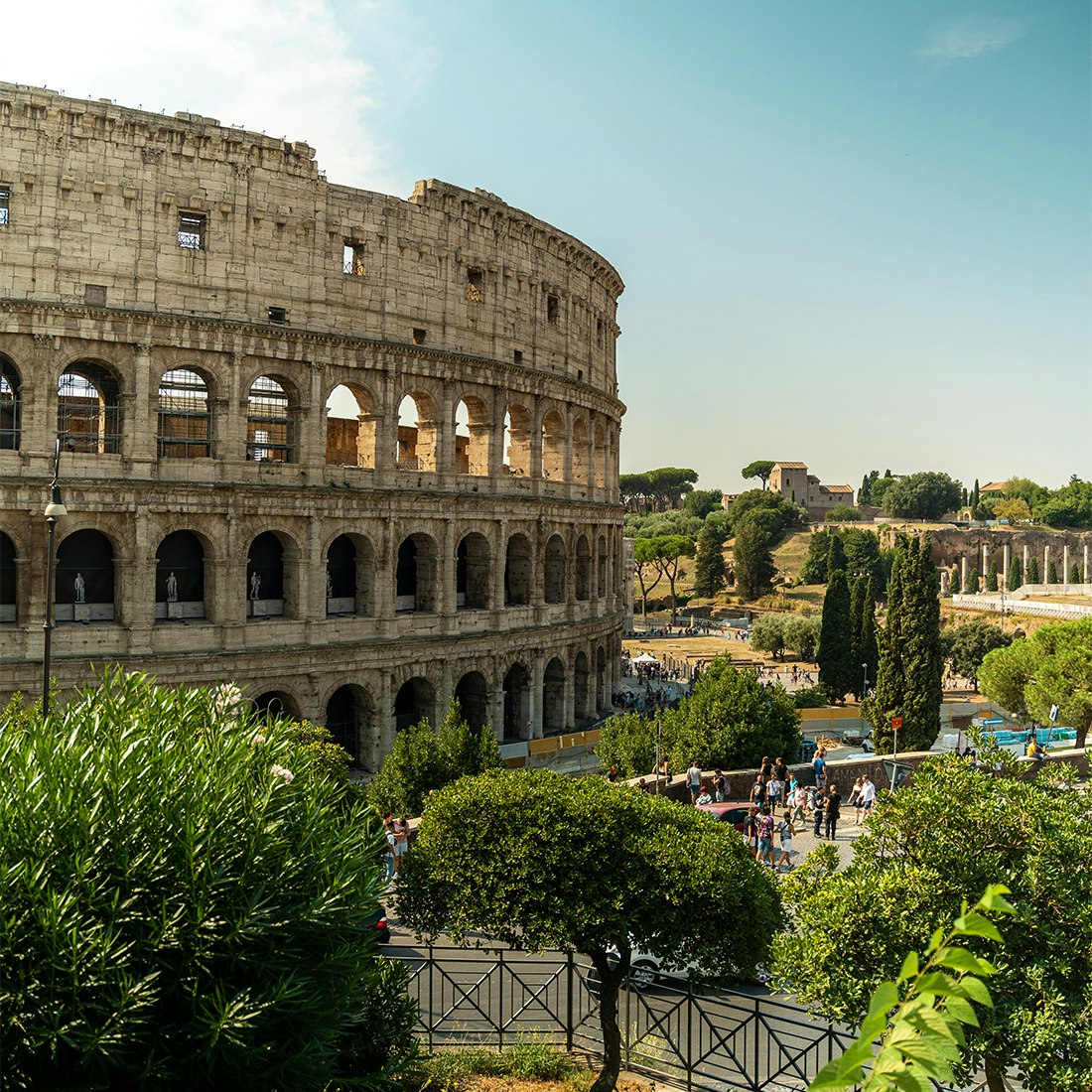Welcome to Edinburgh. On arrival at Edinburgh airport, make your way to the Arrivals Hall to meet a representative from Vantage Explorations, followed by a transfer to our group hotel. At the hotel, visit our hospitality desk in the lobby to meet our team, who will provide you with useful information regarding pre-embarkation procedures and about your time in Scotland. You will also receive Aurora Expeditions cabin tags for your luggage. Please clearly label the tags with your name and your cabin number on the ship.
This evening offers time to relax in preparation for our ‘day out in Edinburgh’ tomorrow. Our group hotel has a popular restaurant and is close to plenty of corner pubs and cosy restaurants should you wish to try some local cuisine.
Accommodation: Courtyard by Marriott Edinburgh (or similar)
Scotland’s capital hosts you today when you explore its ‘royal’ side on your favourite ‘Your Choice’ experience. There’s plenty of time this afternoon to explore the city independently before we gather this evening for a Welcome Event of Scottish proportions.
Steeped in a captivating blend of history that intertwines the Highland clans with centuries-old ties to the British monarchy, Edinburgh is a highlight of any visit to Scotland. Perched dramatically on volcanic hills and dominated by the iconic Edinburgh Castle, the city has served as a strategic stronghold for centuries. Beyond its imposing fortifications, Edinburgh was a hub of political intrigue, and a meeting place where clan leaders negotiated, celebrated, and occasionally clashed. Its proximity to the Highlands made it a natural focal point for these gatherings, underscoring the city’s pivotal role in Scottish clan culture. In addition to its Highland clan dynamics, Edinburgh boasts deep connections to the British monarchy. Holyrood Palace, the Royal Yacht Britannia, and the annual Edinburgh Military Tattoo, exemplify the city’s royal heritage, steeped in centuries-old traditions of pageantry and military prowess.
Today, visitors to the city are encouraged to explore its royal residences and resting places, museums and galleries, and witness firsthand the traditions that have shaped its unique identity. Edinburgh stands as a living testament to Scotland’s past, where the legacies of Highland clans and the British monarchy converge in a historically nuanced yet enduring relationship.
Personalise your exploration with our included ‘Your Choice’ experiences.
Option 1 – Morning experience: The Royal Mile and Edinburgh Castle
Scotland’s most famous mile awaits us this morning, promising a fascinating journey as our guide shares quirky tales and local gems. Immerse yourself in the rich Scottish history woven into the medieval labyrinth of cobblestone alleyways and tenements. Along the Royal Mile, discover the captivating St Giles’ Cathedral, the historical Parliament Square, and the storied John Knox House. This UNESCO World Heritage Site is brimming with secrets and unforgettable stories, offering an experience you won’t want to miss.
At the pinnacle of the Royal Mile, follow in the footsteps of kings, queens, soldiers and prisoners as you explore the historical Edinburgh Castle. This former royal residence is brimming with fascinating stories from its past. Perched high on a volcanic rock, the castle had a strategic advantage over invaders and has witnessed many sieges, often switching hands between Britain and Scotland. An iconic UNESCO World Heritage Site, Edinburgh Castle holds many historical treasures, including the Honours of Scotland – the oldest Crown jewels in Britain. Created during the reigns of James IV and James V, these jewels were first used together for the coronation of Mary, Queen of Scots, in 1543. During World War II, the Crown of Scotland was cleverly hidden in a medieval latrine closet in David’s Tower! Our audio tour of the castle is stacked with fascinating facts about this stoic fortress, making it both factual and enjoyable.
Option 2 – Morning experience: The Royal Mile and the Palace of Holyrood
Our morning starts with a visit to Edinburgh’s royal residence. Holyrood Palace has been linked with Scotland’s royal history for centuries. Mary, Queen of Scots, resided there from 1561 to 1567, during a turbulent period marked by political intrigue. The palace was also home to King James VI of Scotland, who later became James I of England, whose unification of the two nations led to the end of the clans. In more recent times, Queen Elizabeth II used Holyrood Palace for official engagements and ceremonies during her annual ‘Holyrood Week’, where she hosted garden parties and met with Scottish dignitaries. The palace’s opulent decor is complemented by its art collection, featuring pieces from the Royal Collection, and its well-preserved historical apartments, which offer a fascinating glimpse into the lives of Scotland’s royalty.
From Holyrood House, Scotland’s most famous Royal Mile promises a fascinating journey as our guide shares quirky tales and local gems. Immerse yourself in the rich Scottish history woven into the medieval labyrinth of cobblestone alleyways and tenements. Along the Royal Mile, discover the captivating St Giles Cathedral, the historical Parliament Square, and the storied John Knox House. This UNESCO World Heritage Site is brimming with secrets and unforgettable stories, offering an experience you won’t want to miss.
Option 3 – Morning experience: The Royal Yacht Britannia
A Royal residence for over 40 years, the Britannia enchants us with an audio tour of her decks, apartments, bridge and engine room. Launched on 16 April 1953 from the John Brown & Company shipyard in Clydebank, Scotland, the Royal Yacht Britannia served the royal family for over 44 years. It sailed more than a million nautical miles, becoming one of the world’s most famous ships. To Queen Elizabeth II, Britannia was the ideal royal residence for state visits, official receptions, royal honeymoons, and family holidays. For Great Britain, it was a symbol of the Commonwealth and a proud ambassador, generating billions in trade deals. For the royal family and its 220 dedicated crew members, Britannia was a cherished home. When she was decommissioned in 1997, it marked the end of a long tradition of British royal yachts dating back to 1660 and the reign of Charles II.
Accommodation: Courtyard by Marriott Edinburgh (or similar)
Meals: Breakfast, Welcome Event canapés
We head north to ‘clan country’, for an overnight stay in its heartland: Inverness. The Highlands of Scotland invite us to explore Scotland’s own monarchy, with an en-route stop at the royal Scottish city of Stirling and the battlefields of Culloden.
Perched atop Castle Hill, Stirling Castle stands as a symbol of Scotland’s rich history and royal heritage. This grand fortress, once a favoured residence of Scottish kings and queens, played a pivotal role in the Wars of Scottish Independence. It was the childhood home of Mary, Queen of Scots, and witnessed her coronation. The castle was central to the reigns of the Stewart monarchs, particularly King James VI of Scotland, who became King James I of England, uniting the two thrones for the first time. This union eventually led to the Jacobite uprisings and the demise of the clan way of life. Among other sites within the castle, we explore the magnificent Great Hall, Royal Palace, and Chapel Royal, all beautifully restored to reflect its regal past, while discovering the people and events that have shaped both the castles and Scotland’s history.
Our second stop today offers an insight into the clash of the clans and their British rulers, brought alive this afternoon by our local guides. Scottish clans played significant roles in Scotland’s history and politics. Their relationship with the British crown was complex, marked by alliances and conflicts. The clans often supported different royal factions, notably during the Jacobite uprisings in the 17th and 18th centuries, when many clans backed the Stuart claim to the British throne. The defeat of the Jacobites at the notorious Battle of Culloden marked the end of the clan’s power. Subsequent British policies, including the Highland Clearances, dismantled the clan system, by banning tartan, the Gaelic language, bagpipes, and the communal style of living that the clans had enjoyed for centuries. By integrating Scotland more fully into the British state, English rule diminished the clan influence. Today, the clans’ legacy lives on in Scotland’s culture and heritage, with clan gatherings and tartans celebrated worldwide.
Our guided visit to the battleground of Culloden offers a poignant reminder of the bitter feud between the clans and the crown. The Battle of Culloden, fought on 16 April 1746, was the final confrontation of the Jacobite rising, with the fighting resulting in a decisive defeat for the Jacobite forces led by Charles Edward Stuart (Bonnie Prince Charlie) at the hands of the British government troops commanded by the Duke of Cumberland. The estimated number of casualties varies, but it is generally accepted that around 1,500 to 2,000 Jacobites were killed or wounded during the battle, with those who survived being either imprisoned or executed. In contrast, the heavily armoured British government forces suffered significantly fewer casualties, with around 300 killed or wounded. Standing on the ground where the battle was fought affords us an insight into the brutal manner of 18th-century warfare and its everlasting legacy.
Our overnight stop is in the Highland capital of Inverness. Deeply intertwined with Scotland’s rich clan culture, Inverness is the spiritual home to clans such as the MacDonalds, MacLeods and Frasers, who played pivotal roles in shaping the region’s history and identity. From battles fought to alliances forged, these tight-knit family groups lived a feudal lifestyle, with dedication to their ‘laird’ upmost in their minds. Inverness itself served as a strategic clan stronghold and hosted gatherings that defined Highland life, with annual celebrations such as clan reunions and the Highland Games, celebrating traditional sports and music, keeping alive the legacy of Scotland’s vibrant clan culture.
We gather tonight for dinner, where our host will enthral us with tales of past clan clashes and how they continue to influence ‘the highlands’ 21st century lifestyle.
Accommodation: The Royal Highland Hotel Inverness
Meals: Breakfast, Dinner
Pack your camera this morning, as we may encounter an elusive creature. Not men in kilts, but something nearly as Scottish. Undoubtedly Scotland’s most famous freshwater lake, Loch Ness forms part of the Caledonian Canal, which connects the east and west coasts of Scotland. Extending 37 kilometres in length and dropping to a depth of 227 kilometres, its dark, deep waters are the perfect hiding place for its most mysterious resident. The legend of the Loch Ness Monster, often referred to as ‘Nessie’, dates to the 6th century, when the Irish monk St Columba is said to have encountered a large beast in the River Ness. However, it was not until the 19th century the legend truly captured the world’s imagination, when locals reported seeing a large creature in the water, sparking a series of alleged sightings and numerous expeditions to find the elusive monster. Photographs, sonar readings and various pieces of anecdotal evidence have fuelled speculation and mystery, even though scientific proof of Nessie’s existence remains elusive. We skirt Loch Ness and stop briefly for our own opportunity to see the mysterious beast lakeside.
On arrival at Glasgow, we stop to try a ‘wee dram’. Scottish whisky, or Scotch, is more than just a drink; it’s a symbol of Scotland’s rich heritage and craftsmanship. Distilled for centuries, Scotch embodies the country’s rugged landscapes and meticulous traditions. Each sip tells a story, from the peat bogs of Islay to the crystal-clear waters of Speyside. It is thought that Scots consume around 40 million bottles of whisky annually, reflecting its integral role in their daily lives and celebrations. To be officially classed as Scotch whisky, it must be produced in Scotland and matured in oak casks for a minimum of three years. Visiting a distillery offers a glimpse into this age-old process, where you’ll witness the alchemy of malted barley, pure water, and patient ageing. Tasting the whisky, you’ll appreciate the distinct flavours – smoky, sweet, or spicy – which reflect Scotland’s diverse regions. For Scots, whisky is a proud emblem of their cultural identity and history. Join us on a distillery tour to experience this national treasure firsthand, savour its unique character, and understand its significance to Scotland and its people.
We board Douglas Mawson at the Glasgow port of Troon. After boarding, there is time to settle into your cabin before our important safety briefings. This evening, meet your crew and Aurora Expeditions team as we sail west to the United Kingdom’s enclave of Northern Ireland.
Our overnight sailing takes us to Northern Ireland, and the fascinating city of Londonderry~Derry. Simply known as Derry to the Nationalist (Catholic) population but still referred to as Londonderry by the Unionist (Protestant) population, this ‘border’ town has seen it all. The sectarian ‘Troubles’ of this predominantly Nationalist city may have blemished its reputation, but in recent years these tensions have eased, and although some suburbs retain their sense of division, strolling the streets is safe and the general population are happy to share stories of their stormy past and ambitious future. We come alongside on the river Foyle, the now open, natural border between the United Kingdom and the Republic of Ireland. Our experiences offer the opportunity to view one of the United Kingdom’s greatest clashes firsthand.
Personalise your exploration with our included ‘Your Choice’ experiences.
Option 1 – Full-day experience: Londonderry~Derry
Our local guides interpret the story of Londonderry~Derry in this excursion, which is a combination of a walking and coach tour. Having lived through the tumultuous times of ‘The Troubles’ as the locals refer to it, their firsthand experiences immerse us in the era, where a word to the wrong person, a stroll on the wrong side of the street or a misplaced glance, could cost you your life. In recent years, the artists and youth of Londonderry~Derry have painted emotive murals on walls around the city. We pass several of these as our guides explain the city’s tumultuous past.
A number of monuments in the Bogside neighbourhood shed even more light on key events, such as the hunger strikes that marred the city. After lunch at a local restaurant, we finish our tour at the guildhall. In the early 1600s, the city defended itself by building towering 7.9-metre-high walls around the original city. They are among the best-preserved fortified walls in Europe. We walk atop a section of the ramparts on the way to Guildhall before returning to the ship.
Option 2 – Full-day experience: Dunluce Castle, Giant’s Causeway
Northern Ireland is blessed with impressive natural scenery: vast valleys, glittering lakes and cliffs hoisted up from the Atlantic. We visit its most famous natural attraction, the Giant’s Causeway. Listed as a UNESCO World Heritage Site, the Giant’s Causeway consists of some 40,000 interlocking basalt columns lifted from the ocean by volcanic activity over 60 million years ago. Of course, according to legend, giants strode across columns over the sea from Scotland, creating what looks like a giant pathway of stepping-stones that start on land and disappear into the ocean. After lunch at a local restaurant, we follow the Scenic Causeway Road to Dunluce Castle. Once the headquarters of the MacDonnell clan, the castle fell victim to a violent storm and was abandoned. Its ruins and spectacular backdrop have been popular recently, after it was used as the Castle of Pyke in the famous series Game of Thrones. Returning to Londonderry~Derry we enjoy a short driving tour before returning to the ship.
We return to the ship for dinner and sail east to Northern Irelands capital city, Belfast.
A popular port for 18th century emigration to the United States, Larne is located around half an hour north of Belfast.
It is fair to say Belfast has endured its share of turbulent times. Famines, disease, invasions and recessions have painted a picture of a resilient city, but it was the more recent period known as ‘The Troubles’ that defined its image of division. Barbed wire, armed soldiers, and constant bomb searches kept tourists away. Today, however, Belfast has transformed, thanks to open political dialogue and foreign investment. The city feels lighter, as if a heavy burden has been lifted from its shoulders.
Spend your morning on a guided tour of the famous Dockyard of Belfast to experience the story of the city’s most famous production: HMS Titanic, or travel south to visit Hillsborough Castle, the royal residence when the monarch visits Northern Ireland. There is time to explore Belfast independently this afternoon. Larne port is located around 30 minutes north of the city. A shuttle bus will operate this afternoon for those who wish to explore Belfast further, prior to our sailing early evening.
Personalise your exploration with our included ‘Your Choice’ experiences.
Option 1 – Morning experience: The Queen of all ships – The Titanic Experience
Our morning in Belfast is filled with stories of the workers who toiled 14-hour days to build the world’s most glamorous ships. Did their haste affect the fate of the Titanic? The dockyard’s Titanic Experience, located where the ship was built, may provide some answers. Guided by a local, you will hear why and how the ship was constructed and what happened in its final hours, walking in the footsteps of the designers and shipbuilders. Discover the world-famous story through their eyes. In the self-guided Titanic Experience, uncover the sights, sounds, and stories of the ship, the city, and the people who built her. Learn about the sinking, the aftermath, the quest to find Titanic, and her final resting place, through unique artefacts and replicas of staterooms and social areas. After our tour, you may choose to return to the ship for lunch or stay in Belfast and join our shuttle to the ship this afternoon.
Option 2 – Morning experience: The Royal Residence of Hillsborough Castle
Enjoy a morning at Northern Ireland’s royal residence, Hillsborough Castle. This Georgian mansion, the Northern Ireland residence of His Majesty the King and home to the Secretary of State for Northern Ireland, is surrounded by stunning woodlands and formal gardens. Built in the 18th century by Wills Hill, the 1st Marquess of Downshire, it has hosted numerous royal visits and state events. We explore elegant rooms like the Throne Room and State Drawing Room, and learn about its role in the Hillsborough Agreement, which led to the Anglo-Irish Agreement of 1985, along with a stroll through the 100-acre grounds, including the Granville Garden, which was frequented by Queen Elizabeth II and Princess Margaret and featured in the TV series The Crown. A stop will be made in Belfast on our return to the ship, should you wish to enjoy Belfast independently and return using our shuttle this afternoon.
The village of Heysham, located on the northwest coast of England, serves as our gateway to the historical town of Lancaster and the ever-popular Lake District today. Situated near Morecambe Bay in Lancashire, Heysham has been a vital port for fishing and maritime trade since the Viking era. Its working harbour and historical lighthouses reflect its rich seafaring heritage. Nearby, Lancaster Castle, a medieval fortress steeped in history, overlooks the city of Lancaster, just a short distance from Heysham. The castle’s imposing presence highlights the region’s historical significance, serving as a symbol of power and authority through centuries of English history. Heysham’s proximity to the Lake District National Park adds to its allure, offering visitors easy access to the stunning landscapes and outdoor adventures of one of England’s most beloved natural reserves.
Personalise your exploration with our included ‘Your Choice’ experiences.
Option 1 – Morning experience: England’s Most Royal Castle, Lancaster Castle
Lancaster Castle, often known as John O’ Gaunt’s Castle, is one of the most historically fascinating buildings in the country. Dating back to Roman times, it stands on a hill overlooking the town of Lancaster and the River Lune. Owned by the Duchy of Lancaster, whose Duke is currently His Majesty King Charles III, the castle has hosted numerous royal visitors throughout its storied past. Among its distinguished guests are King John, Robert the Bruce, Edward II, John of Gaunt, Henry IV, James I, Charles II, Queen Victoria, and Queen Elizabeth II. Beyond its royal connections, Lancaster Castle has a dark and complex history. It served as a fully functioning HM Prison until 2011 and witnessed significant events such as the trials of the Lancashire Witches and over 200 executions. The castle’s role in religious persecution and its use as a place of punishment offer a revealing insight into the nation’s evolving attitudes towards crime and justice. Today, we tour Lancaster Castle, delving into its grim past and exploring its rich royal connections, with time this afternoon to relax onboard or explore Heysham.
Option 2 – Morning experience: Lake District – The Top Dog of Topiary – Levens Halls
Get your clippers ready because it’s spring in the Lake District, and few places are greener, or more steeped in history, than Levens Halls. Its famous topiary garden, the oldest in the world, bursts into life with over 100 creatively, sculpted hedges and vibrant spring blooms. But beyond the garden lies a house that has been a family home since the 12th century. The original deed recording the enclosure of the land still exists, and each generation has left its mark, reshaping the architecture, enriching the interiors, and enhancing the gardens. Today, Levens Halls remains privately owned and lovingly cared for. A private tour offers a rare glimpse into rooms lined with carved oak panelling, leather wall coverings, and ornate plasterwork. You’ll see Elizabethan furniture, Cromwellian armour, and even gifts from the Duke of Wellington. Levens Halls isn’t just a visit, it’s an immersion into nearly 1,000 years of living history.
Option 3 – Full-day experience: Lake District – The royal holiday resort of Windermere
We follow in the footsteps of many a royal holidaymaker today, by spending time in that ‘quintessentially British icon’, the Lake District. Dotted with 16 lakes, meres and waterways, the region of Derwentwater, collectively known as the Lake District, is beloved for its green rolling hills, slate valleys and quaint towns, with Windermere standing as its crown jewel. Stretching over 16 kilometres in length, Windermere has attracted tourists for centuries and inspired generations of poets and authors, including William Wordsworth, Samuel Taylor Coleridge, and Beatrix Potter.
This region holds a special place in the Victorian history of England. Queen Victoria’s visits to the Lake District, particularly to Windermere, were significant in popularising the area as a holiday destination. Her first visit in 1835 marked the beginning of the Lake District’s reputation as a scenic retreat for the British aristocracy and later, for tourists from around the world. The Cockermouth–Keswick–Penrith Railway, which opened for passenger traffic in 1865, brought even more visitors to the Lake District. A flurry of hotels and B&Bs were built, and steamers began to sail the waterways, showcasing a Victorian ambience that remains today.
Queen Victoria returned to the Lake District several times throughout her reign, staying at various estates. Subsequent visits by monarchs such as King George V and Queen Elizabeth II have maintained its allure. Today, we follow in their wake with a boat cruise on the waters of Windermere, a drive through its rolling hills and valleys, and time spent at a village on its shores.
Day 8 Holyhead, Wales, UK (Port: Holyhead)
Located on the Isle of Anglesey in Wales, Holyhead is a port town steeped in maritime heritage. Today, it serves as a gateway to the stunning hinterland of Snowdonia, renowned for its rustic castles and quaint Welsh villages scattered along the rugged coastline and amid the interior’s rugged national parks. Our ‘Your Choice’ options today offer an opportunity to experience your choice of two UNESCO World Heritage listed ‘royal sites’ or stretch your legs on an escorted hike in Wales’ Snowdonia National Park.
This afternoon we are in for a real treat: an onboard performance from a Welsh choir. Welsh male mining choirs are a powerful symbol of Wales’ cultural heritage. Originating in the coal-mining communities, these choirs embody the resilience and camaraderie of the miners. Their harmonies, rich and resonant, reflect the soul of the Welsh landscape and its history. Singing traditional hymns and contemporary pieces, these choirs preserve a unique musical tradition. Attending a performance is a moving experience, showcasing the strength and spirit of Welsh communities through song.
Personalise your exploration with our included ‘Your Choice’ experiences.
Option 1 – Morning experience: The Prince of Wales - Caernarfon Castle
Caernarfon Castle’s towering silhouette dominates the bay in Gwynedd, Wales, symbolising a triumph for medieval architecture and royal prestige. Built by King Edward I in the late 13th century to assert English dominance over Welsh princes, it was a strategic response to ongoing regional instability. Edward and his military architect, Master James of St George, oversaw the construction of not just the castle but also the town walls and a quay, a unified effort spanning 47 years and costing £25,000 – an immense sum for its time. Today, its imposing walls and polygonal towers stand as a testament to its formidable past.
Beyond its military role, Caernarfon Castle is deeply intertwined with the British royal family. Here, in 1969, the then Prince Charles was invested as the Prince of Wales, continuing a tradition dating back to 1301. This ceremony, steeped in centuries-old ritual and symbolism, underscores the castle’s enduring link to Welsh history and its role in British monarchy pageantry. As a UNESCO World Heritage Site, Caernarfon Castle invites visitors to explore its battlements, courtyards, and the iconic Eagle Tower, offering a firsthand glimpse into its architectural grandeur and royal connections. A must do for any visitor to Wales.
Option 2 – Morning experience: UNESCO World Heritage Site – Castell Conwy
Located just a 45-minute drive from Holyhead, the medieval fortress of Castell Conwy has towered over the vital crossing of the River Conwy for seven centuries. Our visit today ensures a plethora of royal stories. One of the most impressive medieval fortresses in Europe, Castell Conwy contains the most intact set of medieval royal apartments in Wales, offering a glimpse into the life of the English monarchy during the medieval period. The high curtain wall and eight lofty towers rise almost as impressively as when they were built more than 700 years ago, and thanks to its restored spiral staircases in its great towers, you can walk a complete circuit around the battlements.
In the distance, the craggy mountains of Eryri (Snowdonia) rise, and below you, the harbour and narrow streets of Conwy are still protected by an unbroken 1,400-yard (1.3 km) ring of town walls. The breathtaking views are complemented by the castle’s rich royal history. Built by King Edward I and his master architect James of St George in just four years between 1283 and 1287, Conwy Castle stands alongside Edward’s other great castles at Beaumaris, Harlech, and Caernarfon as a World Heritage Site. Grandiose and steeped in medieval history, Castell Conwy tells a tale of royal life during the dark days of the Middle Ages, making it a must-see for any royal enthusiast.
Option 3 – Morning experience: ‘Aurora Active’ - Hiking Snowdonia
Get ready to say ‘waw am olygfa’ as we explore one of Britain’s top hiking destinations. Spanning 823 square miles, Snowdonia is Wales’ largest national park, known as Eryri in Welsh. This rugged area is rich in culture and history. Towering peaks and green valleys provide stunning scenery as we hike through Cwm Idwal Valley, surrounded by the dramatic heights of Y Garn, shaped by ancient glaciers. Our experienced mountain guide will share local legends and insights into Welsh life, as we follow the shoreline of Llyn Idwal, a lake named after Idwal, son of Owain, an ancient Prince of Gwynedd. According to legend, Idwal drowned here, and no birds have flown over the lake since. After our hike, we’ll return to the ship, with a deeper love of this stunning country. (Note: Designed to invigorate both body and mind, our ‘Aurora Active’ experiences foster a deeper connection with your destination with every step. This activity requires a high level of fitness and stability. Rough, uneven mountainous paths, streams to cross, stiles and some steep sections are found along our path).
Sailing the Irish sea, we meet the coast near Rosslare and make our way to the popular city of Waterford.
Known as the city where culture meets the ‘craic’ (that is Irish for a good time), Waterford is a modern city with a layered history. Invaded by the Norsemen in 914 CE, Waterford became a Viking settlement, which is reflected in its people even today. It emerged from the Middle Ages as a trading port with the wealth from goods that came from as far away as Newfoundland, the profits of which funded the construction of the many Georgian mansions that line the city’s streets. A town for those who enjoy a good stroll, Waterford is easy on the eye, offers plenty to see and as its reputation suggests, is full of fun.
Today's 'Your Choice' experiences let you dive into some intriguing regal encounters. Discover the Kennedy family's ancestral stronghold in Wexford, where the Kennedys are considered American royalty, travel to Kilkenny Castle for an intriguing story of nobility gone wrong, or enjoy a visit to every royal family’s favourite crystal producer; Waterford Crystal. We’ll dock at the Port of Waterford, only a handy 10-minute coach shuttle into town, affording you an afternoon exploring Waterford should you wish, before we set sail in the early evening.
Personalise your exploration with our included ‘Your Choice’ experiences.
Option 1 – Morning experience: Kilkenny Castle
Considered Ireland’s best preserved medieval city, Kilkenny mixes small town intimacy with a big city buzz. The former home to the seat of the medieval Irish parliaments, it rivalled Dublin in importance, which is evident in its imposing Norman buildings and marble-clad facades even today. Few buildings in Ireland can boast a longer history of continuous occupation than Kilkenny’s monolithic castle, and few have a more fascinating family story. Kilkenny Castle’s 800 years of history is associated with the rise and fall of the Marshall and Butler families who rose in nobility from Earls to Dukes. In more recent years they were known for their marriages to famous personalities, such as Winston Churchill’s cousin, and Ellen Stager, an American heiress who brought quite a fortune into the Butler family. However, by 1922 Kilkenny Castle was embroiled in political problems when it was occupied by Republicans and besieged by troops of the Free State. In 1967, the family sold the castle to the Kilkenny Castle Restoration Committee for a mere £50. If you love a good riches-to-rags story, you will enjoy the story of Kilkenny and its powerful peerage.
Option 2 – Morning experience: Viking Waterford and Waterford Crystal
This morning, we embark on a locally guided walking tour of Waterford, a city steeped in history and renowned for its crystal craftsmanship. Known as the Viking Triangle, Waterford’s city centre reflects its roots, dating back 1,100 years when Norse invaders settled here, enriching the area with their trade. Moving through the city’s modern side, with its vibrant mix of pubs, clubs and artisan shops, we explore its centre before joining our artisan tour. At the House of Waterford Crystal, established in 1783, we witness the artistry behind these world-famous glass creations named after their hometown. From the initial design to the final engraving, we observe master blowers, crystal cutters and engravers at work, gaining insight into the meticulous craftsmanship that defines each masterpiece.
Option 3 – Half day experience: Kennedy Homestead, Wexford, and Johnstown Castle
Built in 1810 as a Gothic Revival masterpiece, Johnstown Castle conceals a history steeped in royal rebellion. Among its notable guests was Oliver Cromwell, who stayed here in 1649 before the infamous Sack of Wexford. His Roundhead army prepared on the castle’s grounds, while the Catholic Esmonde family, were later expelled during Cromwell’s rebellion against the British crown. Purchased by the Grogan family in 1692, Johnstown Castle saw Cornelius Grogan hanged for his role in the 1798 Rebellion as commissary-general for the United Irishmen. In 1810, the estate was restored by John Knox Grogan, who, along with his son Hamilton Knox Grogan-Morgan, transformed it into the Johnstown Castle we see today, built upon the ‘bones’ of a Norman tower house. A visit reveals sumptuous apartments, landscaped grounds and a tale fit for royalty.
Escaping the Great Famine in the 1840s, the Kennedy and Fitzgerald families seized an opportunity, boarding a ship bound for Boston. A century later, their great-grandson, John Fitzgerald Kennedy, made history as the first Catholic President of the United States. During his 1963 visit to Ireland, JFK journeyed to Wexford, retracing his ancestors’ footsteps. Today, we follow his pilgrimage to the small Kennedy homestead, where an interpretative exhibit tells their remarkable story. The centre offers a guided tour featuring audio-visual presentations, a photographic exhibition, and historical displays detailing Patrick Kennedy’s journey as a famine emigrant and the achievements of his descendants.
Having explored the fractured past between Ireland and the United Kingdom, we arrive around midday at the quintessential British county of Cornwall. The seafaring folk of Cornwall have traditionally lived around the crags and coves of the county’s coastline in small villages that hug bays and cling to clifftops. Falmouth, with its rich maritime heritage, was established in the 17th century and played a crucial role in naval history, serving as a base for packet ships that carried mail across the British Empire. The town’s natural harbour facilitated its development as a significant maritime centre. Today, Falmouth is a vibrant community known for its maritime activities, including shipbuilding and fishing.
This afternoon, we tender ashore due to tidal restrictions, as mariners have for centuries to join ‘Your Choice’ of Cornish experiences. Once the tide permits, we'll dock to welcome you aboard in the late afternoon and sail for Plymouth early evening.
Personalise your exploration with our included ‘Your Choice’ experiences.
Option 1 – Afternoon experience: Cornwall’s Maritime Obsession
Visiting the National Maritime Museum Cornwall offers a deep dive into the county’s rich maritime heritage. Located at nearby Falmouth marina, this museum explores Cornwall’s historical significance as a maritime hub, with an emphasis on Falmouth, which in the 1880s was so internationally important that 25 countries had consular representatives there.
The Cornish are deeply connected to the sea, from smugglers and pirates to fishermen and naval personnel. The sea has played a major role in the county’s story, and this museum tells the broader tale of Cornwall, not just its boats. The museum showcases the maritime history of Britain’s first and last port of call, from the packet ships of the late 17th century to the port’s heyday in the 19th century. Modern maritime achievements, including those of Sir Robin Knox-Johnston and Dame Ellen MacArthur, and the honourable story of Cornwall’s Royal National Lifeboat volunteers, are also highlighted. With interactive exhibits and countless boats on display, a visit here promises to be a fascinating journey into Cornwall’s enduring relationship with the sea.
Option 2 – Afternoon experience: Henry VIII’s Pendennis Castle
Travel back to Tudor Cornwall with a visit to Pendennis Castle. Conveniently located on the Falmouth headland, this historical site was commissioned by Henry VIII to protect his kingdom against the marauding French. The castle is steeped in tales of attack, invasion, and even the odd ghost or two. Remarkably, while the castle was being built, Henry VIII managed to marry three of his wives, divorce one, and behead another, all without halting construction. Built between 1540 and 1545, the castle stands as a testament to Tudor military engineering. It played a crucial role during the English Civil War, enduring a five-month siege before falling to Parliamentarian forces. Over the centuries, Pendennis continued to serve as a military stronghold, seeing action during both World Wars.
Today, the castle offers a glimpse into its storied past with well-preserved fortifications, interactive exhibits, and stunning views of the Fal Estuary. Visitors can explore the castle’s history, from its Tudor origins to its 20th-century defences, making it a fascinating journey through time.
Option 3 – Afternoon experience: Marazion and St Michael’s Mount
This afternoon, we step back in time with a visit to Marazion and St Michael’s Mount. With a coastline perfect for clandestine activities, the village of Marazion, a former haven for smugglers, retains its air of intrigue. Tales of hidden treasures and secret passages add mystery to this hamlet’s charm.
Just offshore lies St Michael’s Mount, an island with a medieval castle steeped in legend and lore. Originally a pilgrimage site in the 8th century, it became a Benedictine monastery in the 12th century, mirroring Mont Saint-Michel in France. Over time, it evolved into a fortified castle, protecting the region from invasions. In the 14th century, following the English Civil War, Colonel John St Aubyn was appointed Captain of the Mount and purchased it in 1659 for £1,900 – a hefty amount at the time. Today, Lord and Lady St Levan – James and Mary St Aubyn – continue the family’s stewardship of this unique place. (Access to St Michael’s Mount is via a causeway, dependent on tides, or by small boat. Visiting times may be affected by the tides and cannot be guaranteed – should this not be feasible on the day we will visit Penzance instead).
Today, we step ashore in a port steeped in maritime history and royal connections: Plymouth. This city’s rich legacy begins with the Mayflower, which set sail from Plymouth in 1620, carrying the first Pilgrims to America. Landing at Plymouth Bay, Massachusetts, this voyage marked a pivotal moment in Europe’s expansion to the ‘New World’, with over 30 million people today tracing their ancestry to its 102 passengers and crew from England and Leiden, Holland. We literally follow in their footsteps, as our tender comes alongside within sight of the very steps they used when boarding the Mayflower, giving us direct access to Plymouth’s centre. Plymouth’s maritime heritage extends to Sir Francis Drake, a celebrated naval commander and explorer. Famous for circumnavigating the globe and defeating the Spanish Armada in 1588, Drake was knighted by Queen Elizabeth I aboard his ship, the Golden Hind, in Plymouth harbour. Over the centuries, Plymouth’s naval significance has deepened royal ties, with the late Duke of Edinburgh serving as Commodore-in-Chief for Plymouth. This enduring connection underscores Plymouth’s pivotal role in British naval history and its global influence.
Personalise your exploration with our included ‘Your Choice’ experiences.
Option 1 – Morning experience: The Story of Plymouth
Welcome to Plymouth, a city steeped in maritime heritage. Our locally guided tour starts in the historical Barbican, where the Pilgrim Fathers embarked on the Mayflower in 1620. Standing by the Mayflower Steps, you can almost hear the echoes of their momentous departure to the New World, a journey that would forever link Plymouth to American history. We wander up to Plymouth Hoe, to envision Sir Francis Drake calmly playing bowls as the Spanish Armada approached in 1588. The panoramic views of Plymouth Sound from the Hoe offer a glimpse into the natural harbour that has served as a vital naval base for centuries. On the headland, Plymouth Castle remains a military installation, its silhouette serving as a reminder of the city’s strategic importance through the ages.
Our tour ends at the Royal William Yard. This beautifully restored naval victualling yard, now bustling with restaurants, galleries and shops, perfectly blends Plymouth’s rich maritime past with its vibrant present. Choose to linger here or return to our tender pier, with plenty of time to explore Plymouth further as we sail late afternoon to the Isle of Wight.
Option 2 – Morning experience: HMP Dartmoor
Visiting Dartmoor Prison offers a compelling glimpse into the harrowing history of 19th-century Britain. Built during the Napoleonic Wars, Dartmoor was a response to the appalling conditions on floating prisons, known as ‘hulks’, anchored in Plymouth. Overcrowding, poor sanitation, and inadequate diets on these ships led to high death rates, prompting the construction of a land-based prison. Princetown on Dartmoor was chosen, and the first prisoners arrived on 22 May 1809.
By 1813, Dartmoor Prison was severely overcrowded with the arrival of American prisoners, worsening already dire conditions. Outbreaks of pneumonia, typhoid and smallpox claimed the lives of more than 11,000 Frenchmen and 271 Americans, whose graveyards and memorials are located at the rear of the prison. After the wars ended, prisoners were repatriated, and the prison closed in early 1816. It reopened in 1850 as a penal establishment for criminals. Today, Dartmoor Prison remains operational. Our visit to its museum offers historical insights and exhibits about the prison’s past, presenting one of Britain’s most fascinating and brutal stories.
Option 3 – Morning experience: The Thatched Hamlet of Cockington
An hour’s drive through the Devon countryside brings you to one of southern England's rural gems. Step into the hamlet of Cockington, where the passage of time has stood still. Snug in the heart of Devon, this picture-perfect village offers a rare glimpse into life before Britain’s industrial revolution. The streets lined with charming, thatched cottages transport you into the rural lifestyle of the English nobility and their estate workers. Here, the pace of life remains as slow and simple as it was centuries ago, inviting visitors to immerse themselves in a bygone era.
Today, Cockington lovingly preserves its rich heritage while nurturing a vibrant creative community. Along with the village itself, the former aristocratic home, Cockington Court, has been transformed into a hub of craft studios where artisans showcase their skills in dedicated 'making areas' and sell their handcrafted creations.
The Isle of Wight, a favoured summer holiday destination, offers travellers more than Victorian-era seaside towns and sandy beaches. Just three kilometres across the Solent from the Hampshire coast, this 388-square-kilometres island’s strategic location has guarded ports like Southampton and Portsmouth throughout history, from Roman times, through to the Spanish Armada, to the Battle of Britain.
The coastal gem of Cowes hosts us today as we anchor in its famous bay and tender ashore like the royals of olde. This ‘yachty’ town boasts a royal sailing legacy and has hosted the esteemed Cowes Week regatta since 1826. This sailing hub attracts yachties and royalty alike to its renowned waters, home to prestigious sail makers and synonymous with wealth and yachting prestige. Strolling its waterfront streets, we find an eclectic mix of shops and cafes filled with sailing equipment, seaside souvenirs and tasty baked treats respectively.
Early this evening, we sail the Solent, following in the wake of countless ships that have departed from Southampton and Portsmouth over the centuries. These waters have carried emigrants seeking new lives, soldiers heading off to war, and cruise passengers embarking on transatlantic journeys. On board, enjoy a Farewell dinner as we pay homage to our own voyage’s end.
Personalise your exploration with our included ‘Your Choice’ experiences.
Option 1 – Morning experience: Queen Victoria and Prince Albert’s Osborne House
Framed by giant oaks and manicured gardens, Osborne House stands in a northern suburb of Cowes as a splendid testament to the love between a prince and his queen. Built between 1845 and 1851, Osborne House was designed by Prince Albert as a gift for his wife. This Italianate palace reflects their tastes and interests, providing a glimpse into the private lives of these very public figures.
Osborne House served as a family home where the royal couple and their children could escape the formalities of court life. The house features grand state rooms, intimate family rooms, extensive gardens and a private beach fit for a queen. Visitors can explore Queen Victoria’s exclusive apartments, the unique Durbar Room, built by the Queen to honour her attendant Abdul Karim, and the Swiss Cottage, where the royal children learned practical skills.
After Prince Albert’s death in 1861, Queen Victoria found solace at Osborne House, spending much of her later life there. She died at the estate in 1901 at the age of 81. Osborne House also played a significant role in the lives of her successors. King Edward VII and George V enjoyed the seclusion and family-oriented atmosphere, finding it a place where they could relax away from the public eye. Osborne House’s blend of architectural beauty, royal history and personal artefacts make it a fascinating destination for anyone interested in the Victorian era.
Option 2 – Morning experience: Carisbrooke Castle
The popular royal attraction of Carisbrooke Castle hosts us this morning on this locally guided tour. Sitting high at the heart of the Isle of Wight, Carisbrooke Castle served as an artillery fortress, a king’s prison, and a royal summer residence. Its most notable resident, King Charles I, was famously imprisoned here and made a daring but unsuccessful escape attempt before his execution in 1649. The castle later became the home of Princess Beatrice, Queen Victoria’s favourite daughter, who served as its governor, and the beautiful Princess Beatrice Garden is named in her honour. Visitors can explore the historical chapel of St Nicholas and meet the beloved Carisbrooke donkeys, along with visiting the museum, which holds over 30,000 treasures donated by the people of the island. Carisbrooke may be a little ‘themed’ but with its deep royal connections, popular cafe and enthusiastic staff, it makes for a fun ‘Isle of Wight’ morning out.
Option 3 – Morning experience: Cowes – The Crown Jewel of Sailing
We join a locally guided walking tour of Cowes to hear tales of famous yachts, sailors and royal reunions. The name ‘Cowes’ is synonymous with royal yachting, largely due to its strong connection with the British monarchy’s obsession with sailing. This picturesque town has been the centre of yachting since the founding of the Royal Yacht Squadron in 1815, one of the most prestigious yacht clubs in the world. Queen Victoria and Prince Albert popularised Cowes as a royal yachting destination, establishing Osborne House nearby as their summer retreat. The annual Cowes Week, one of the longest-running and most famous sailing regattas globally, attracts sailors and European royalty alike, including members of the current British royal family. Britian's sailing heritage is celebrated at Cowes offering visitors a rich insight into the nations illustrious yachting history and royal connections.
Our walking tour will lead us to the Max Aitken Museum, named in honour of the renowned yachtsman and newspaper magnate Sir Max Aitken. Housed in an 18th-century sailmaker's loft originally used by Ratsey & Lapthorn, the museum was acquired and meticulously restored by Sir Max in 1947. It offers a captivating look into the craftsmanship that has established Cowes as a premier yachting destination. Inside, you'll find a rich collection of maritime souvenirs, artifacts, and artworks, providing a unique glimpse into Britain’s esteemed yachting heritage.
We cross the Solent overnight and disembark at the naval city of Portsmouth. Our journey takes us on a regal route with a visit to the town of Royal Windsor, where we visit King Charles III’s weekend retreat, Windsor Castle.
Windsor Castle stands as an iconic symbol of British royalty, recognised as the oldest and largest inhabited castle in the world. Initially constructed by William the Conqueror in the 11th century, it has been a royal residence for nearly a millennium. Its majestic architecture, profound historical significance, and role as a functioning royal palace make it a dream for royal aficionados. Throughout history, it has witnessed pivotal events, including rebellions and reprisals, births and burials, weddings and divorces, while during World War II, Windsor Castle provided crucial refuge for the royal family, safeguarding them from the London bombings. In 1992, a devastating fire almost destroying several galleries complete with artwork, prompting Queen Elizabeth II to famously describe the year as her “annus horribilis”.
Today, Windsor Castle remains an active royal residence. It continues to host state visits, ceremonial occasions and commemorations, perpetuating its legacy as an integral part of British heritage. Our visit includes exploring the State Apartments, St George’s Chapel, and the extensive grounds, all of which showcase the castle’s rich history and grandeur before we continue our journey to London.
This evening, you are free to sample some local fare. Perhaps try pheasant pie and risotto, coddled eggs, or foraged wild mushrooms, all said to be King Charles III favourites.
Accommodation: Copthorne Tara Hotel London Kensington (or similar)
Meals: Breakfast onboard
With its six royal palaces, numerous shops endorsed by royal charters, and a wealth of museums, galleries, and vaults housing treasures from the Crown Jewels to King Charles III himself, London indisputably embodies the essence of ‘the crown’. From the iconic coronation chair at Westminster Abbey to the stately Royal Mews, and the expansive parklands of St James’s Park, to countless pubs bearing royal names, every corner of London resonates with regal history, ensuring any ‘crown aficionado’ a right royal day out.
With an abundance of royal sites to explore, the choice is yours today, when you use your hop-on-hop-off bus pass to uncover the city’s regal history. Whether you prefer the open-top or traditional inside seating, this popular mode of transport offers a fully guided tour with stops at all the significant sites. From Buckingham Palace to the Tower of London, Westminster Abbey, and St Paul’s Cathedral, you will have the opportunity to visit numerous iconic locations that showcase the city’s rich royal heritage. We’re including an entrance ticket to the Tower of London in your experience. After all, no royal day out in London is complete without marvelling at the Crown Jewels, hearing the city’s story from the Beefeaters, and discovering the intriguing tales of eccentric monarchs and lost heads.
This evening, join your fellow travellers and host at a right royal Farewell Event.
Accommodation: Copthorne Tara Hotel London Kensington (or similar)
Meals: Breakfast, Farewell Event canapés
We bid you farewell today with a departure transfer to Heathrow airport – the monarch’s airport of choice!
Meals: Breakfast


